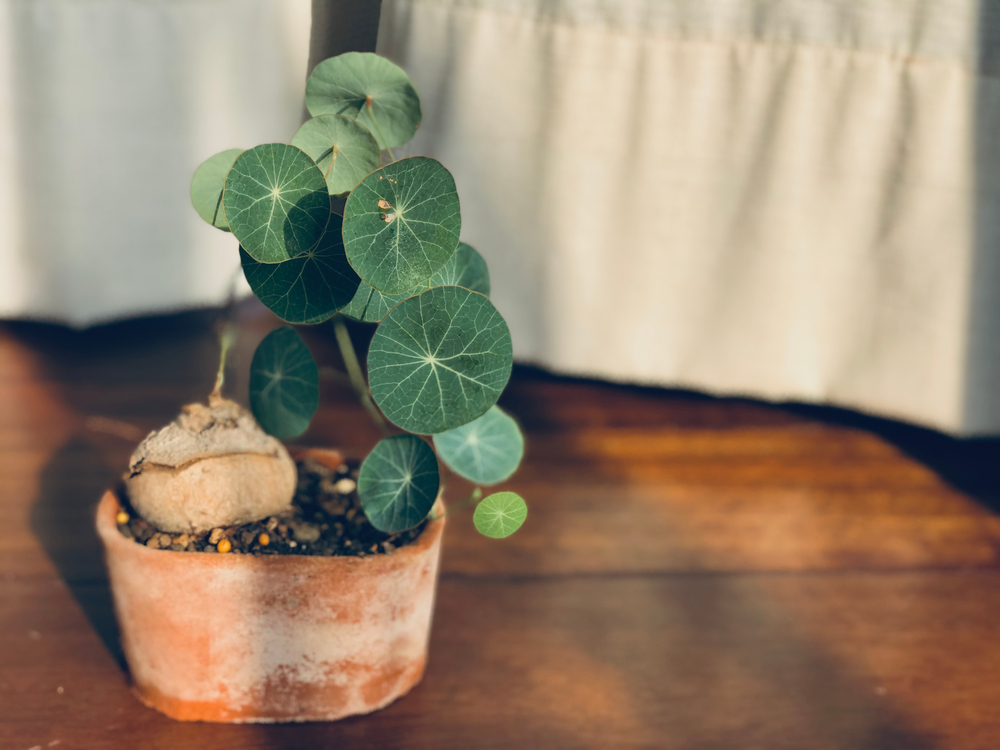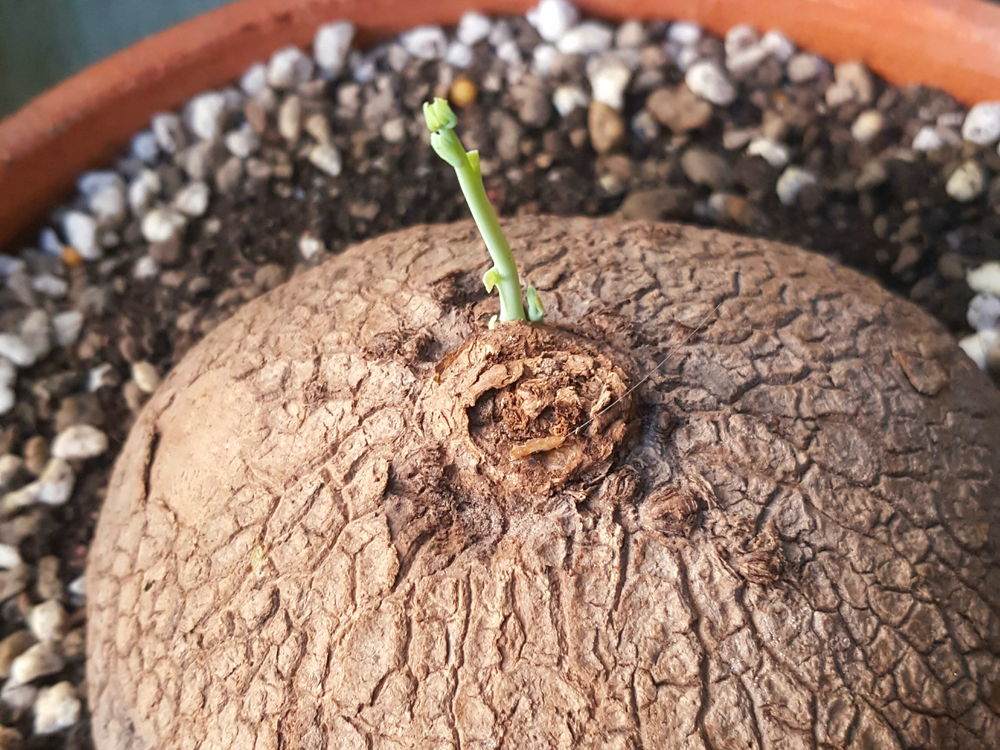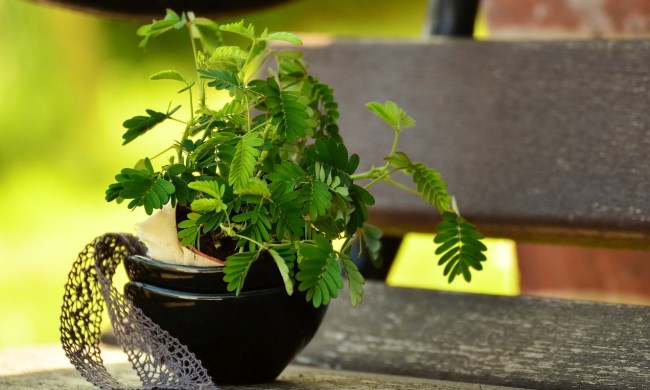It’s a well-known meme about people feeling like, looking like, and turning into potatoes. So maybe this is why this once rare plant has suddenly boomed in popularity. The Stephania erecta looks like a sad little chubby potato that also sprouts adorable and beautiful stems and leaves. So perhaps we growers like the metaphor this plant suggests, and maybe we can resonate with its potato-ness. Either way, this adorable plant would make an excellent addition to your collection. Here’s how to care for it.

What is a Stephania erecta?
As we said before, the Stephania erecta is also sometimes called the potato plant because it looks like a chubby potato. This plant, originally from Thailand, grows beautiful foliage from a woody bulb called a caudex (the potato part). From the caudex sprouts multiple thin stems that grow shield-like leaves similar to a peperomia plant. It’s very magical looking and might remind some of a certain popular book series about wizards. The Stephania etecta averages 3 feet in height, but it takes a long time to mature, sometimes up to 20 years. The potato part of the plant, the caudex, can reach up to 7 inches wide, and the leaves range around 2 inches in diameter. One of the fun and attractive aspects of this plant is the effort required to get it to sprout. Often when you purchase the plant, it comes in its “potato” form and has no greenery.
The process to encourage it to sprout can be fun and rewarding and might even make for an excellent experiment for those with children.
How to sprout a Stephania erecta
You have to “activate” the Stephania erecta before it can sprout. This process is similar to what seeds and nuts do in the wild. Soak the caudex in warm water for 24 hours with the nodes (where the sprouts will grow) pointing up. Once it’s soaked, you can pot it up. Don’t bury the entire caudex into the soil. Instead, rest it on top of the soil with those nodes pointing up again. Fill soil around the sides, be careful not to cover the caudex, and give the plant some water.
Humidity is what tells the Stephania erecta that it’s time to sprout. Create a little germination habitat for your Stephania erecta with supplies you have at home, or you can purchase one online. Either way, plant the caudex in damp soil and place it in your germination dome. Keep the plant in a warm place that never goes below 77 degrees and preferably stays around 80 degrees. It will also need bright indirect light.
As you wait for it to sprout, keep the soil moist with a mister or by gently watering the soil. Within a month, you should begin to see a sprout starting, and you can relax knowing you have a happy little potato.

Care tips for Stephania erecta
Now that it’s sprouted, you’ll want to adjust your care routine. But, after all that work, you don’t want to mess something up and have a sad, soggy potato, so here’s how to care for the Stephania erecta plant.
Water
It’s important to note that overwatering is the most common reason plants die, especially for the Stephania erecta. It’s very easy to overwater this plant because the caudex holds onto moisture. To avoid this, allow the soil to completely dry out before watering it again. To be safe, you might even want to wait a bit, even after the soil is dry. This plant will need even less water in the winter, so be careful and maybe purchase a water gauge to help you out.
Light
This part stays the same for when you’re trying to sprout the plant: It wants bright but indirect sunlight.
Food
It’s actually recommended not to feed this plant, but if you see signs of stress, you can provide it with a water-soluble fertilizer once or twice a year.
Temperature
Luckily the Stephania erecta likes the same temperatures that we tend to keep our houses at. Around 60 to 80 degrees is best for this plant, but you might lose leaves if it’s near a drafty door or a vent.
Humidity
While this plant hates being over-watered, it does prefer a bit more humidity than the average houseplant. It will thrive best at 60 percent or higher; any lower and you’ll start seeing crispy brown leaves.
Toxicity
The Stephania erecta is toxic to cats and dogs, so be sure to keep it out of their reach or avoid it altogether.
The Stephania erecta is pretty simple to care for once you’ve “activated” it and gotten it to sprout! This plant is quirky and adorable, and it’s bound to be unique to all your other plants.


